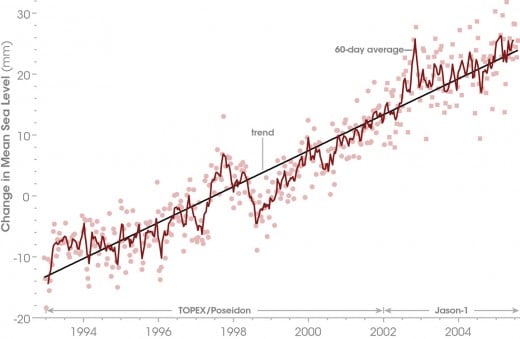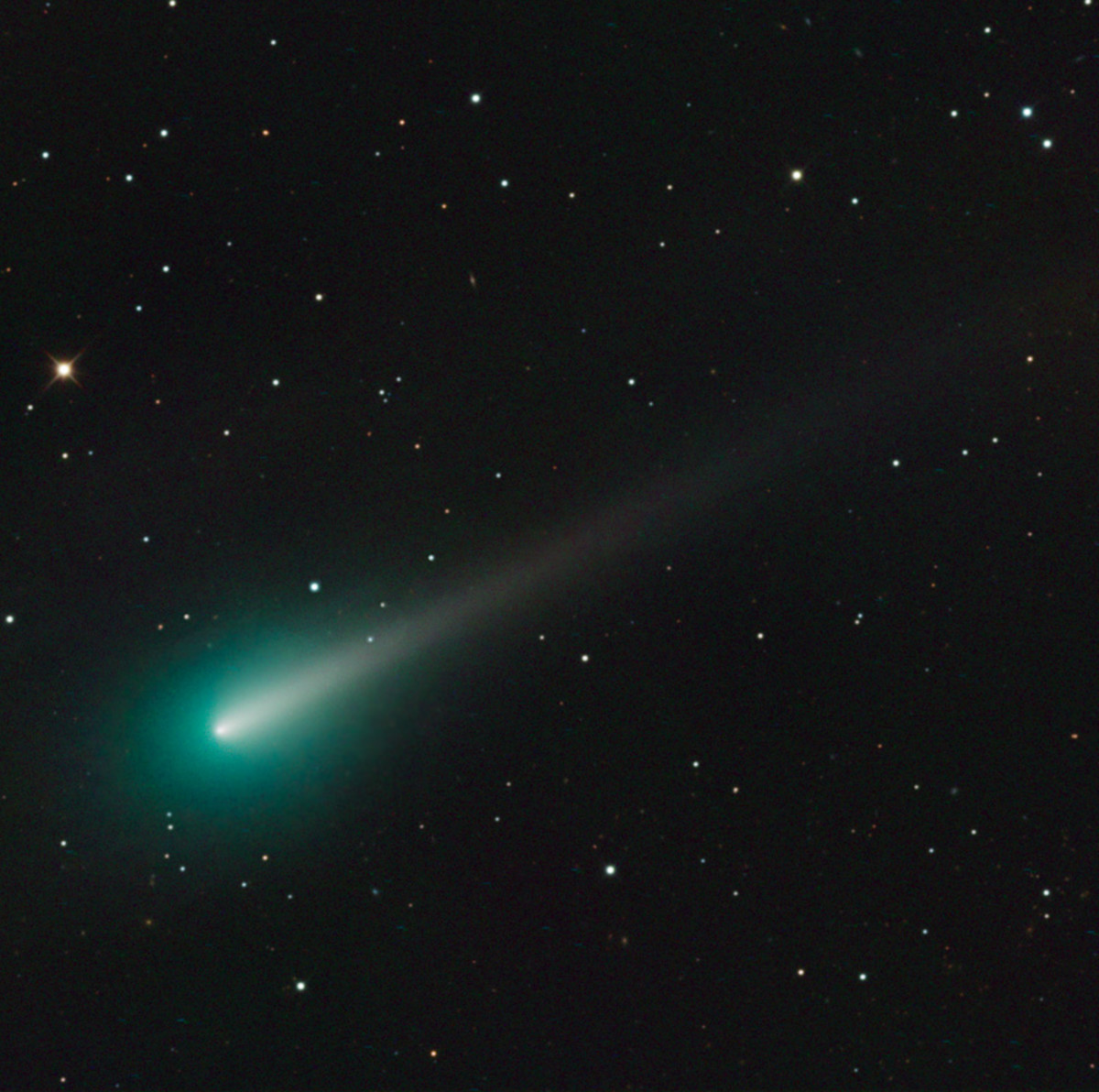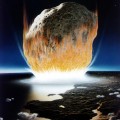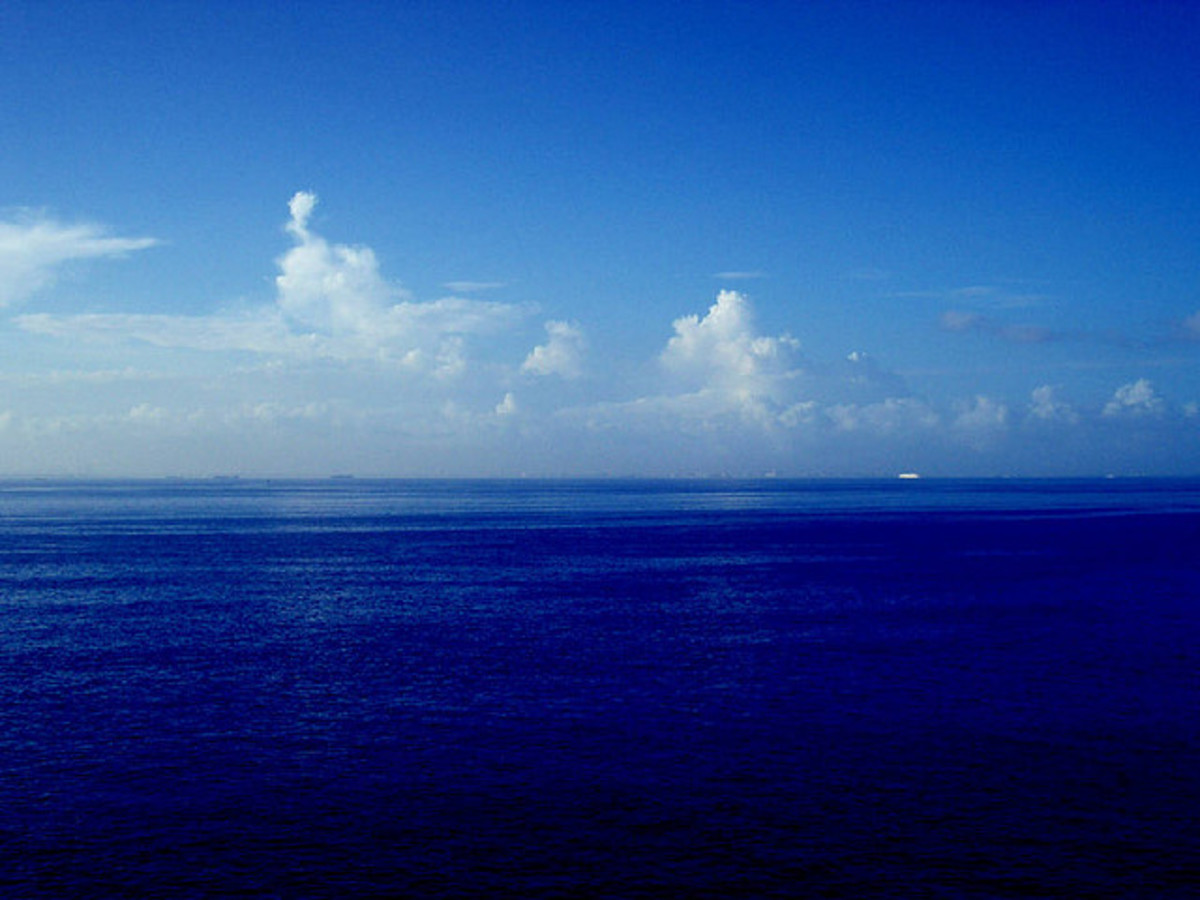How Sea Levels Rise and Fall on Earth

Currently, sea levels are on the rise, but this may change
Sea levels rise as a result of many influences including human. These sea level rises are a result of water delivered from deep space, the melting of accumulated ice on land, water being created from reserves of oxygen and hydrogen inside the earth's crust, land subsidence or collapse and from thermal expansion. The Earth as a whole is a dynamic place where changes of all size are ongoing from small to large. Sea level rise accordingly is a relative phenomena depending in related conditions. The Earth will continue to change and sea levels will rise and fall accordingly.
12,600 years ago, the sea level was generally much lower because the Earth was in the final stages of the last deep freeze. Freezes and thaws pulse in a general 100,000 year cycle with radical short term swings occurring within each cycle. At the end of the last freeze, general sea levels were lower by over 130 meters than is the norm today. The result was that all the continents were joined as one with the exception of Antarctica, Madagascar, Iceland, which was much larger, and Australia, separated from Malaysia by a very narrow and deep channel. Then there was a plethora of islands in the ancient Pacific and Atlantic Oceans. There were vast coastal plains that are now continental shelves below sea level off the coast of eastern N. America. The same was true for Asia, where Japan was joined to the mainland. Then there was a great meltdown that submerged coastlines in mere years and decades in several discrete stages over several thousand years. From about 6,000 years ago to the present, sea levels have been relatively constant. Recently, they have been on the rise again due primarily to the increase of greenhouse gasses injected into the atmosphere by human activity. This is at a point where the natural cycles tell us that the Earth should be entering into another deep freeze with the result of falling sea levels.
Going back to the birth of the Earth, all the oceans were delivered to Earth form nearby space during the various stages of accretion. They were delivered bit by bit by comets, first in the dim nebular period of the solar system and it continued during the two heavy bombardment periods from 4.5 to 3.85 billion years ago. It is not presently known why there were two bombardments. There are a lot of theories and sleuthing, but still a lot of questions. However, the evidence does exist that water is abundant in the solar system and it is found at the Martian polar caps, as permafrost on Mars, on the great moons of Jupiter and Saturn and in comets. There is not dispute in this anymore as the evidence is now abundant and clear. So when the Earth formed, it collected some of the available water. During the first heavy bombardment, the Earth collided with a Mars sized planet in a nearby, earth crossing orbit and the moon was born out of it. There is little doubt that what water existed was vaporized and even reduced to hydrogen and oxygen and lost to space. Thus, most of the water we have today came from the second bombardment and later impacts from comets. Earth lost most of its regolith to the moon and thus what was left over, formed chunks floating on the lithosphere that became the continents. These continents moved around and reshaped over the eons to what they are now.
Not all the water we see in the oceans is the sum of what there is. Some is captured in anhydrous rocks on and below the surface of the Earth. Often times when volcanoes erupt, the trapped water below is ejected as superheated steam to condense on the surface and flow to the oceans. The additions here are tiny compared to other additions, but it does contribute to sea rise levels to a tiny extent.
The Earth has been through a wild climate ride throughout its history, from tropical, to ice-ball conditions, to hot-house and everything in between the extremes. The movement of continents helped to redefine ocean levels. The ocean levels rose and fell depending on how hot or cold the climate was. At times, the ice-pack on the continents was so extensive, it was miles deep. The oceans were at a low level and during the ice ball ages, even the oceans froze over the entire surface right to the equator. This happened three times in geological history. Then, when the Earth "reheated", the ice melted. In one occasion, a hothouse Earth followed after an ice-ball Earth. This was thought to have occurred due to a super volcanic explosion that injected carbon dioxide and sulfur dioxide into the atmosphere. This created warmth, mega storms and intense acid rain.
The Earth is a dynamic place where change is going on all the time. Sea levels rise in some regions and fall in others; so it is very much a relative phenomenon. Vast regions exist on Earth that are well below sea level, but you'll not find a spot of water anywhere. One is Death Valley in Southern California and another is the Dead Sea in Israel among others. Historically, most of the Mediterranean Sea and Black Sea were once dry land until sea levels in the Atlantic Ocean rose enough to breach the lowlands between what is now the Pillars of Hercules. A similar situation is evolving in the Great Rift Valley in Africa that extends from Ethiopia to Lake Victoria far to the south. The northern part is already beginning to flood. This flooding occurs because the floor of the rift valley is slowly sinking. On Boxing Day of 2004, a large swath of the Earth's crust suddenly sank generating a tsunami that affected 1/6th of the planet. Other regions are rising. This is due to events going on deep beneath our feet. The magma is rising and sinking in great currents that pushes up and pulls down on the crust. The sea tends to flow into the lowering parts and away from the rising parts, so in a combined and unequal way, some areas see a rise and others a fall relatively speaking. Generally, over the last century they have been rising, inundating places like the Seychelles and coastal lowlands.
Massive collapses of land cause two events. Geological evidence shows that these events served to raise sea levels after a mega-tsunami event swept the world. Mega-tsunamis have left their marks all over the world and some have been more than a kilometer high. There is even one handed down in west coast Indian legend about a maga-tsunami that wiped out the communities all along the west coast. Only a few people escaped by running up into the mountains to start over again. No one knows what triggered a tsunami that was 500 meters in extent as measured in the debris left behind in the mountains at so called “trim lines”. It is surmised that a huge land collapse in Hawaii triggered it and caused a slight general rise in ocean levels. On January 9th, 1700, a huge (9.2 by estimate) earthquake in British Columbia triggered a tsunami that hit Japan and China several hours later generating massive loss of life and destruction as recorded in both countries at that time. A substantial chunk of British Columbia collapsed and parts went under the sea. On some of the shorelines are stands of petrified stumps that are left from the collapse of the ancient forest into the sea. Locally in BC, sea levels rose relatively and only by a tiny amount everywhere else. In the Canary Islands is a rotting volcano filled with heating water presents a threat to both sides of the Atlantic if it should collapse. When it goes, it is expected that a mega-tsunami at least 500 meters in extent will do horrendous damage to the US, Canada, Mexico, S. America, Europe and Africa. General sea rise will be almost nil after the water settles. The rotting volcano syndrome was directly witnessed and filmed with the collapse and sideways explosion of Mount St. Helens in Washington State in 1980.
If all the remaining ice pack should melt, sea levels around the world would be expected to rise some 20 meters, (60 feet), which would inundate many low lying coastal areas where many major port cities around the world are situated. Sea levels have risen so much over the last fifty years that in India alone, some 100,000 people have had to migrate to higher ground. This trend will continue if the world continues to heat up. Most of the current heating is generated by greenhouse gases that come from human generated industrial activity. Some scientists' fear was realized recently with the collapse of the Western ice pack of Antarctica. The three ice shelves and glacier collapses since 2008 will in short order raise sea levels by about two feet one the ice melts. As the oceans themselves heat up, sea levels would further rise due to thermal expansion. How far this would go depends on how much water is heated to the critical temperature of 86 degrees F. Typically, the surface is heated and this causes currents in the ocean that migrate north and south from the equator to the poles where heat is released and cold water then sinks to the bottom to return to the equator. This is known as the great conveyor and tends to balance things over the long run. It's going to take a lot of heating in order to cause noticeable thermal expansion, so this is not an immediate concern as long as polar ice caps exist. Mountain glaciers are thought to be in danger of disappearing altogether in a few years. These add to sea level rise generally, due to run off of melt water and to a climate change on land toward dryness and droughts on the leeward side of the mountains once the glaciers are gone. Even with glaciers in a reduced form now, there is a tendency to wetter coastlines and dryer interiors.
As the life of the Earth continues, sea levels will rise and fall, continents will continue to shift, submerge and rise. The 100,000 year cycle will likely continue well into the future for millions of years, when the sun ages enough to heat the Earth dramatically, the water will begin to boil off into the atmosphere. Increased cloud cover will keep the surface cooler for a while. The tops of the clouds will verge on space and the water reduced to hydrogen and oxygen and gets carried off into deep space. After a billion years, most of the water will have been removed and the Earth will be high and dry like Mars, only much hotter.
Space in the solar system all the way out to the Oort cloud is filled with enough water to create a body far larger than the Earth if it all came together in one body. Much of it exists in a "powder" form beyond the freeze line of the solar system situated in the Asteroid belt close to Jupiter's orbit. Some of it has aggregated into comets and these continue to deliver water to all the planets including the Earth. If a massive body passes close to the Oort cloud, some of these proto-comets will be perturbed into much more eccentric orbits and a few will cross the Earth's orbit and some of these will impact on Earth and add more water and organic compounds. Comets like other cosmic events come in bursts. One is set to occur in about 1.5 million years as a star comes within one light year of the sun. At this time, material will be exchanged between the star and sun and much will fall into the centers of both systems.
If Earth gets bombarded by a comet storm, such as the comet piece that hit Tunguska in June 1908, there will be a lot of water added after the localized destruction caused by air burst events and local heating. People from ancient times have always had a dread of comets, likely because ancestors passed this on fear from generation to generation. It is likely that the Earth for one reason or another has lived through comet storms.






